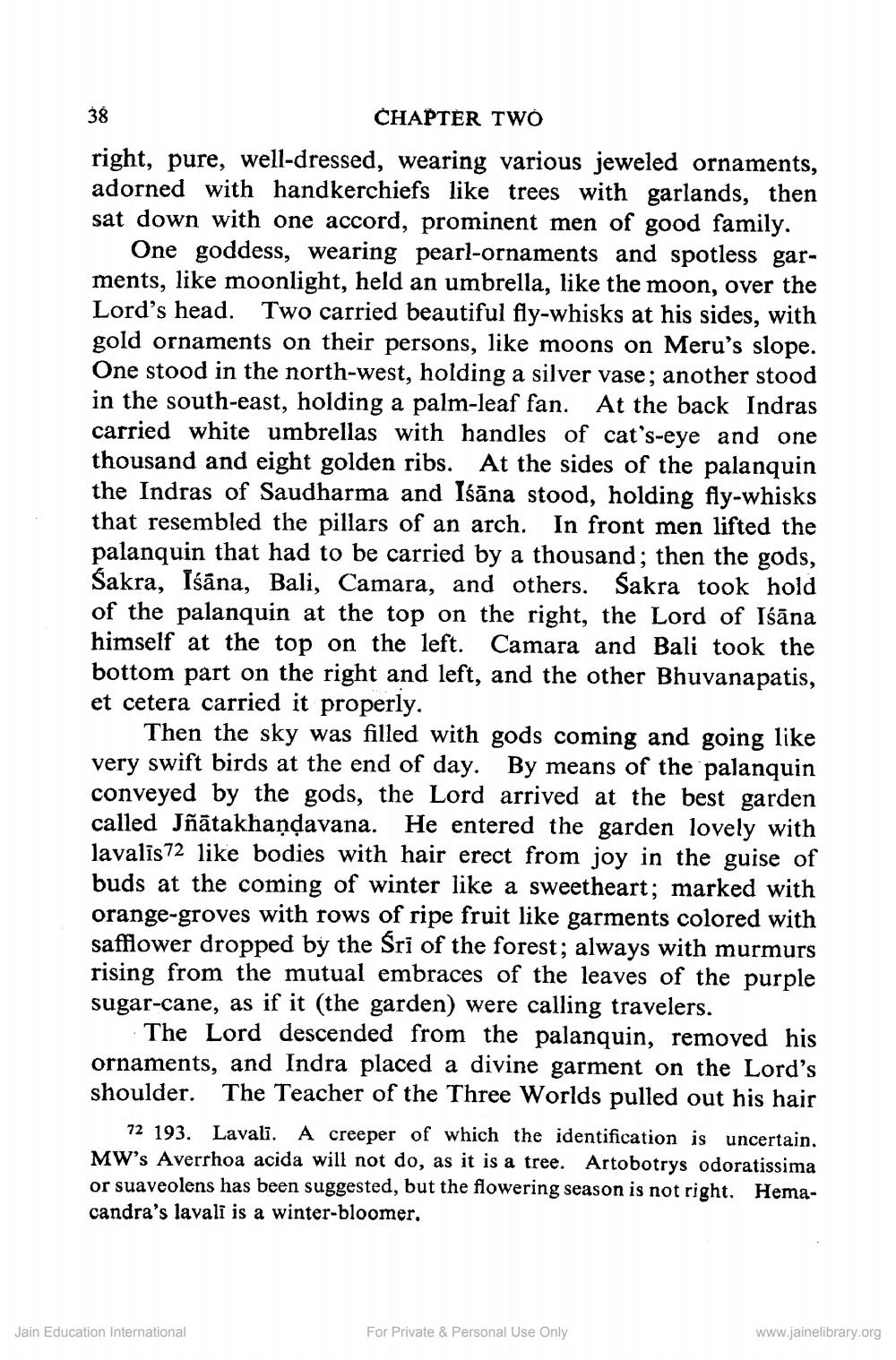________________
38
CHAPTER TWO
right, pure, well-dressed, wearing various jeweled ornaments, adorned with handkerchiefs like trees with garlands, then sat down with one accord, prominent men of good family.
One goddess, wearing pearl-ornaments and spotless garments, like moonlight, held an umbrella, like the moon, over the Lord's head. Two carried beautiful fly-whisks at his sides, with gold ornaments on their persons, like moons on Meru's slope. One stood in the north-west, holding a silver vase; another stood in the south-east, holding a palm-leaf fan. At the back Indras carried white umbrellas with handles of cat's-eye and one thousand and eight golden ribs. At the sides of the palanquin the Indras of Saudharma and Iśāna stood, holding fly-whisks that resembled the pillars of an arch. In front men lifted the palanquin that had to be carried by a thousand; then the gods, Śakra, Iśāna, Bali, Camara, and others. Sakra took hold of the palanquin at the top on the right, the Lord of Iśāna himself at the top on the left. Camara and Bali took the bottom part on the right and left, and the other Bhuvanapatis, et cetera carried it properly.
Then the sky was filled with gods coming and going like very swift birds at the end of day. By means of the palanquin conveyed by the gods, the Lord arrived at the best garden called Jñatakhaṇḍavana. He entered the garden lovely with lavalis72 like bodies with hair erect from joy in the guise of buds at the coming of winter like a sweetheart; marked with orange-groves with rows of ripe fruit like garments colored with safflower dropped by the Śri of the forest; always with murmurs rising from the mutual embraces of the leaves of the purple sugar-cane, as if it (the garden) were calling travelers.
The Lord descended from the palanquin, removed his ornaments, and Indra placed a divine garment on the Lord's shoulder. The Teacher of the Three Worlds pulled out his hair
72 193. Lavali. A creeper of which the identification is uncertain. MW's Averrhoa acida will not do, as it is a tree. Artobotrys odoratissima or suaveolens has been suggested, but the flowering season is not right. Hemacandra's lavali is a winter-bloomer.
Jain Education International
For Private & Personal Use Only
www.jainelibrary.org




